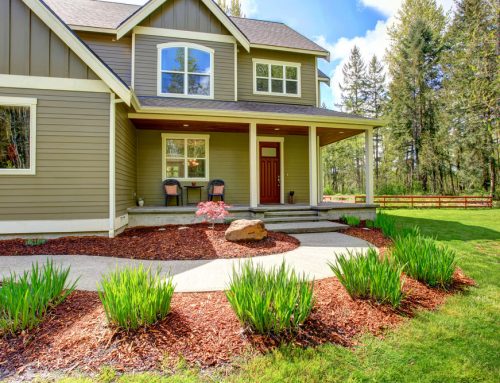Unfortunately, wildfires are widespread throughout California during the summers. They’re due to the aggressive winds, dry grasses, and many trees and shrubs. There’s also a lack of rainfall during the summer, causing the fires to get out of hand. Protecting your home while living in a fire zone seems impossible, but there are many factors you can control. While no house is entirely fireproof, those built with the right materials and landscaping have a better chance of surviving. In this article, we’ll go over how to help protect your home against fires with roofing, windows, and heat reflective paint.
Roofing
When it comes to roofs, there are three classifications that indicate their fire resistance ability. There is Class A, Class B, Class C, and unrated roofs. Class A offers the most fire resistance, including materials like concrete roof tiles, clay roof tiles, fiberglass asphalt composition shingles, tile, slate, and metal roofs. If a roof is unrated, like an untreated wood shake roof, it doesn’t meet any of the three classifications requirements. But if a wood shake roof is treated with fire-retardant chemicals and additional materials, they may meet the requirements for Class A or Class B. For both of our partners were happy to say that GAF shingles and Eagle Roofing Products have Class A ratings!
When it comes to the roof’s shape, steeper roofs have a much better fire resistance than flat ones. This is because the burning embers can easily roll off the roof before they have the time to burn through. To make sure the embers will roll off the roof without starting any fires, homeowners will need to regularly clean their gutters. Additionally, you’ll want to ensure your roof is sealed because winds could blow small embers in the cracks in old roofs and land inside the attic.
Windows
When it comes to protecting your home, your windows are the weakest link. But this doesn’t mean you still can’t find ways to protect them. The heat from fires can shatter your glass without the flames even reaching your house. When facing the heat from a fire, insulated glass (double-pane) holds up much longer than single-pane glass. It’s best to get tempered glass, so if you need to escape your home, the glass will break into smaller chunks, making it easier to go out the window without the risk of cutting yourself on the glass. When choosing the size of your windows if you live in a fire zone, you may want to avoid large picture windows. Smaller windows will have a much better chance of surviving than large windows. If you have a sliding patio or French door, insulated and tempered doors will withstand heat much longer than standard plate glass will.
Tex-Cote Paint
When it comes to protecting your home, you’ll want the exterior to be built with durable outdoor materials. You’ll want to choose sturdy materials like tile or cement. Homeowners can apply Tex∙Cote® to these surfaces to add an additional layer of protection to your home. The paint is designed to reflect heat has a Class A rating for fire protection. Similar to roofing, Class A is the highest fire protection rating. While it is not fireproof, this protective coating will add another barrier to help improve your home’s chances of withstanding the fire.
There is no guarantee to protect your home from a fire (unless you live in a concrete compound), but there are many preventative measures you can take. Thousands of California homes are destroyed by fires every year, but many survive them. If you live in a fire zone, you can trust California Energy Contractors to help protect your home! If you want to know more about how to help protect your home against fires, give us a call at (855) 779-1413, or you can contact us on our website.










